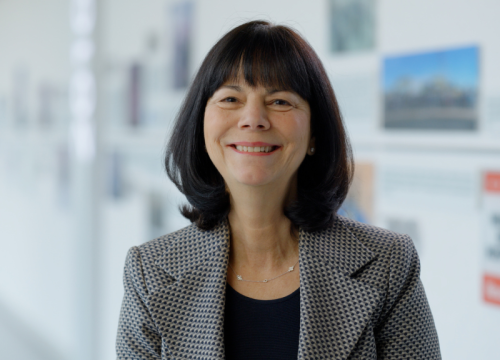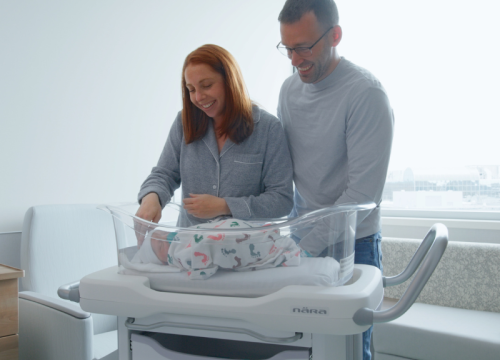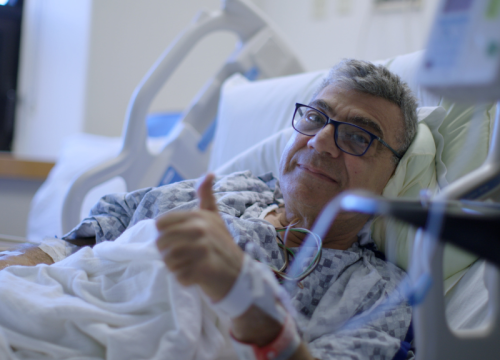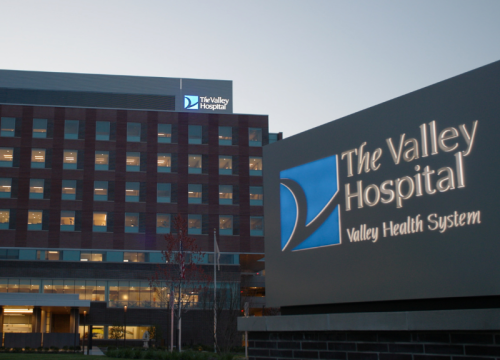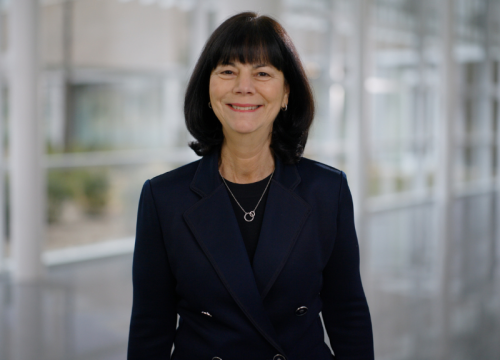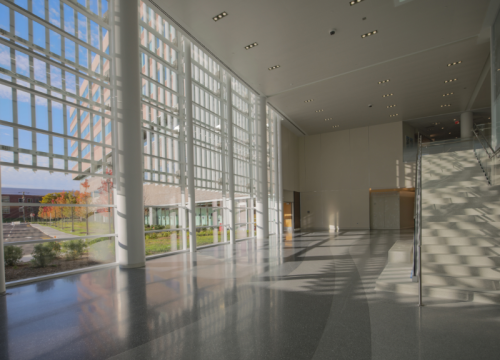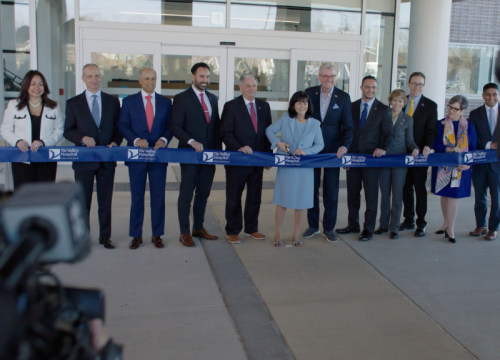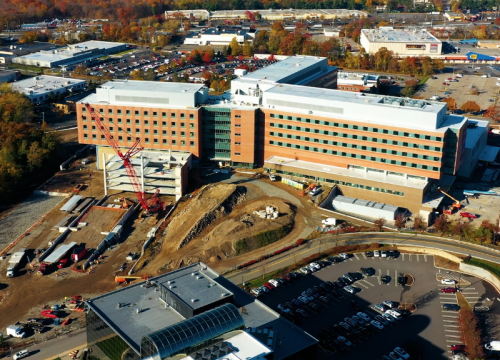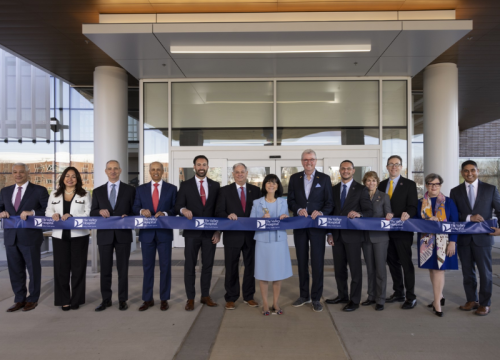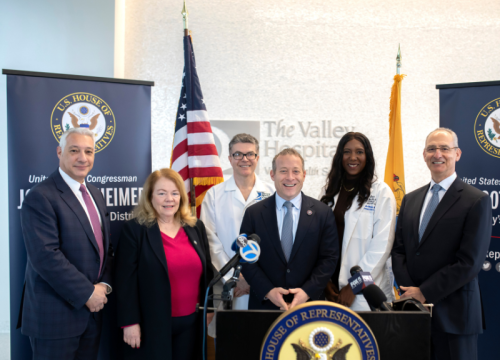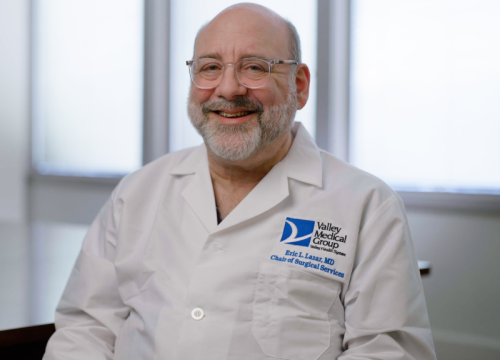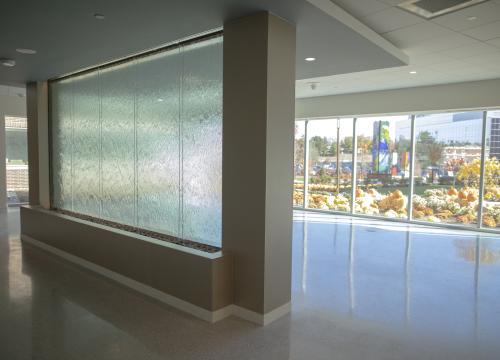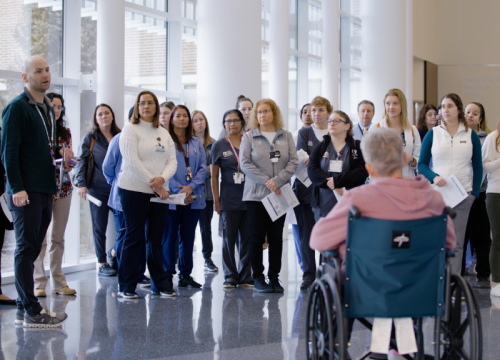The Valley Hospital is now open at 4 Valley Health Plaza in Paramus. (You may need to use 650 Winters Avenue for GPS.) All emergency care is now being provided at this location. Emergency care is no longer available at our Ridgewood campus.
Spinal stenosis is the term used to describe narrowing of the nerve channels within the spine from normal age-related changes. Over time, the narrowing puts pressure on the nerves. This compromises blood flow, which leads to pain, sensory changes and possibly weakness.
Osteoarthritis (age-related degeneration) of the spine leads to thickening of the ligaments, disc bulging and bone spurs (overgrowth). These changes leave less room for the spinal cord and nerves.
There are different types of spinal stenosis depending on the location along the spine. These include:
- Cervical spinal stenosis, like foraminal stenosis (neck)
- Thoracic spinal stenosis (middle back)
- Lumbar spinal stenosis (lower back)
Lumbar spinal stenosis is the most common. Regardless of your condition the team in our neurosciences department could help you find the right treatment option.
Spinal Stenosis Symptoms
Symptoms of spinal stenosis depend on where the narrowing occurs and the nerves involved.
You might have:
- Pain in the back or neck
- Radiculopathy or sciatica (pinched nerve), leading to pain, numbness or weakness of either an arm or leg
- Spinal cord compression, causing weakness or numbness in both arms and/or legs
- Leg cramping
- Balance or walking problems
- Trouble using your hands
- Loss of bowel or bladder control
Because spinal stenosis happens over time, you may not have symptoms at first. But you may notice a gradual onset.
It is important to remember that if your MRI or CT reveals spinal stenosis, you may not necessarily need treatment. You’ll generally only require treatment if it’s causing symptoms.
Valley spine specialists assess and treat your specific symptoms. They have the experience to create a treatment plan appropriate for your case. We work to help you be more active and return to activities you enjoy.
Spinal Stenosis Treatment at Valley
Even though our spine surgeons manage your spinal stenosis, surgery should be considered as a last resort.
We first start with the most conservative, non-surgical options. We may bring in different Valley providers, such as pain management experts, physical medicine and rehabilitation specialists and others. This team-based care allows us to develop a treatment plan specific for your situation.
We may recommend:
- Exercise and at-home options: Remedies like applying heat may relax the muscles and applying ice may reduce swelling and inflammation. Certain exercises can help to improve strength, balance and flexibility. We’ll show you how.
- Medicines: We may prescribe medication to help reduce pain, decrease inflammation or relax muscles. Our team uses the safest options and reserves opioid pain medications for short-term relief, and only when needed.
- Physical therapy: Physical therapists use exercises to strengthen and support the spine and improve balance. Special programs can help you increase range of motion, reduce pain and minimize pressure on the nerves.
- Steroid spine injections: We may use injections to deliver corticosteroid medicines directly to the affected area. The medicine works to reduce inflammation, which can help ease pain.
If these treatments don’t work or do not provide adequate benefit, spine surgery may be an option. Valley has a dedicated team of spine surgeons who will develop a surgical plan that is appropriate for your situation.
Spinal Stenosis Surgery
Surgery for spinal stenosis aims to create more space in the spine to reduce pressure on the nerves and spinal cord.
You can trust our experts to know when spine surgery is needed. They’ll use the least invasive, most effective procedure for your condition. Minimally invasive spine surgery has the advantage of smaller incisions, less tissue trauma, and easier and faster recovery.
Surgical options include:
- Foraminotomy: Tissue or bone is removed from the nerve exit channel.
- Laminectomy: The lamina, or the back of the vertebra, is removed to widen the main spinal canal. Bone spurs and/or ligaments may be removed during this procedure.
- Laminotomy: Only a part of the lamina is removed in an area causing the most pressure.
- Spinal fusion surgery: This is sometimes performed after a laminectomy. This surgery involves joining (fusing) two vertebrae together to stabilize a weakened spine.
At Valley, we help you understand your options and what to expect. And our care doesn’t end after surgery. We follow your recovery and help you build strength and improve mobility and function as you heal.
Why Choose Valley for Spinal Stenosis Care?
- Range of non-surgical treatments: Surgery isn’t the only treatment option for spinal stenosis, and it’s not something that should be considered right away. We partner with different Valley specialists to treat your condition. You get all the care you need, in one place.
- Spine surgery expertise that’s close to home: When it comes to your spine, you want to the best possible care. Valley offers the excellence of an academic center, in a community setting. We use the latest, minimally invasive methods, and our team has the expertise to provide the most advanced treatment alternatives. You don’t have to go far to get optimal spine care.
- Team-based procedures: Our multidisciplinary team works together to plan and develop an individualized approach for your specific situation. It’s like having a built-in second opinion, and a second pair of expert hands.
We get to know you: We take time to understand how your condition impacts your life at home, work and play. This close relationship helps us make treatment decisions that work best for you.


